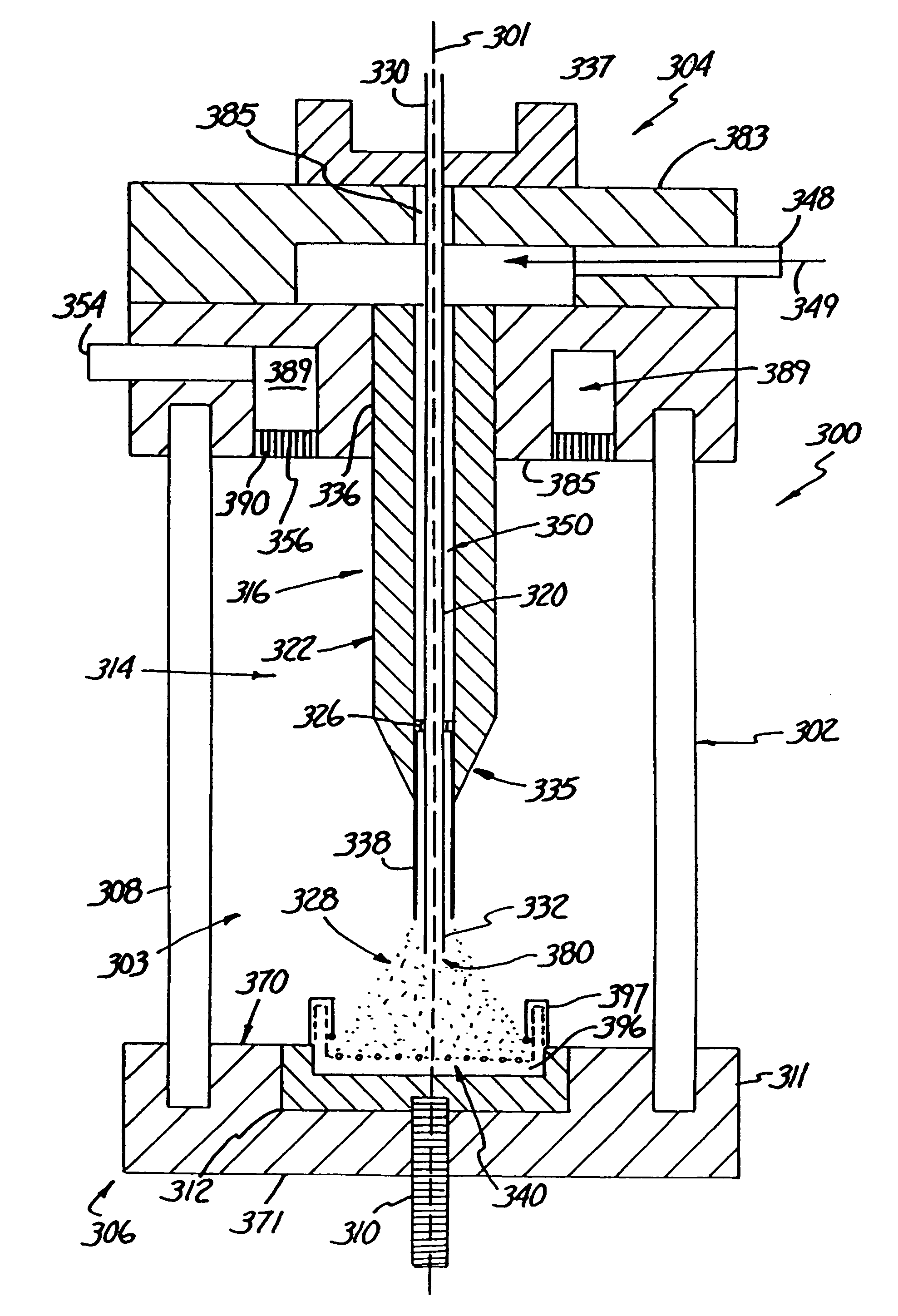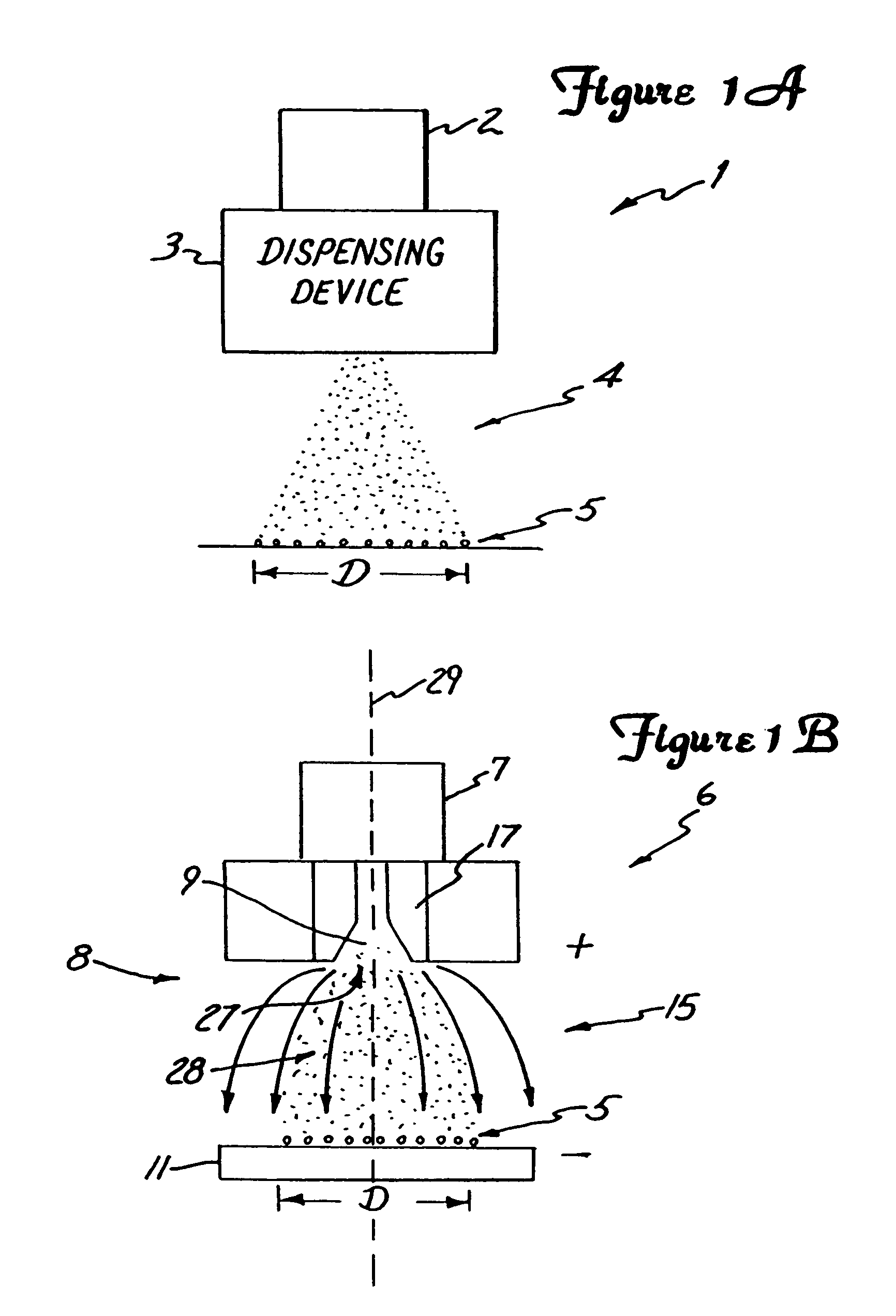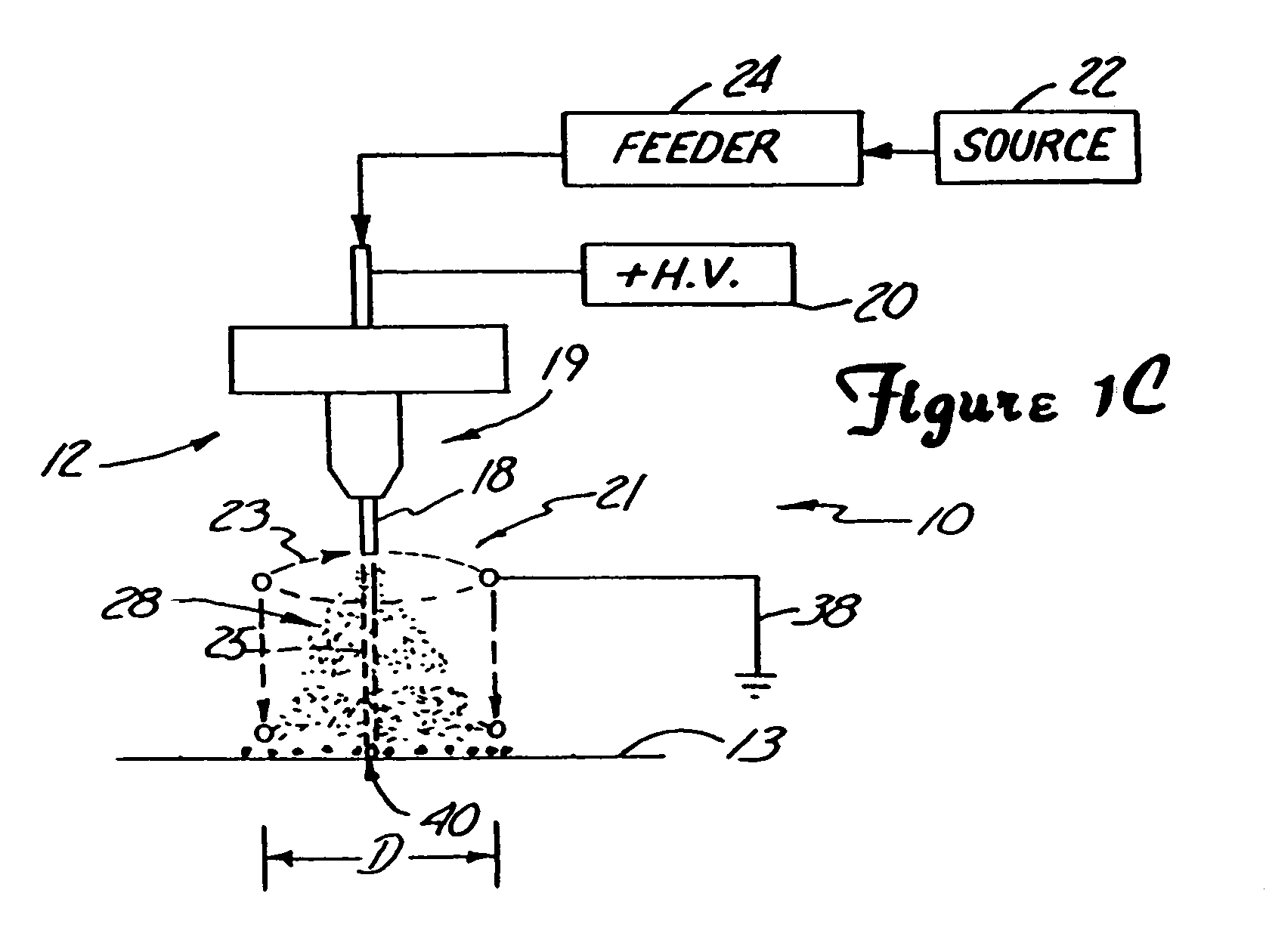Electrospraying method with conductivity control
a technology of conductivity control and electro-spraying, which is applied in the direction of antibody medical ingredients, material granulation, genetic material ingredients, etc., can solve the problems of low transformation frequency, high cost, and high cost of techniques
- Summary
- Abstract
- Description
- Claims
- Application Information
AI Technical Summary
Benefits of technology
Problems solved by technology
Method used
Image
Examples
example 1
[0115]Using an apparatus equivalent to that shown in and described with reference to FIG. 7 modified with the dual capillary tube distributor head 400 shown in and described with reference to FIG. 8, biological material transfer was successfully accomplished. The apparatus used was configured with a center capillary tube 413 having an outer diameter of about 229 μm to about 241 μm and an inner diameter of about 89 μm to about 127 μm. The second capillary tube 414 concentric with the center capillary tube had an outer diameter of about 533 μm to about 546 μm and an inner diameter of about 394 μm to about 432 μm. The distance d1 shown in FIG. 8 from the end of tapered section 335 to the end of the metal casing 322 is about 2 cm. The diameter d2 of the first end 336 of the nozzle portion or metal casing 322 is about 0.5 cm. The outer diameter d4 of the second end 338 of the nozzle portion 322 is about 1715 μm to about 1740 μm and an inner diameter d3 of about 1333 μm μm to about 1410 μ...
example 2
[0122]The same setup of Example 1 was used. The only difference was that Au particles were not added to the suspension and the voltage applied to the element 312 was 5600 volts such that the dispensing device was operated in cone jet mode. Again, the Lw microscope was used to visually note the fluorescence. Approximately 40 percent to 60 percent of the cells fluoresced. As fluorescence was noted, introduction of biological material into the cell was successful.
PUM
 Login to View More
Login to View More Abstract
Description
Claims
Application Information
 Login to View More
Login to View More - R&D
- Intellectual Property
- Life Sciences
- Materials
- Tech Scout
- Unparalleled Data Quality
- Higher Quality Content
- 60% Fewer Hallucinations
Browse by: Latest US Patents, China's latest patents, Technical Efficacy Thesaurus, Application Domain, Technology Topic, Popular Technical Reports.
© 2025 PatSnap. All rights reserved.Legal|Privacy policy|Modern Slavery Act Transparency Statement|Sitemap|About US| Contact US: help@patsnap.com



